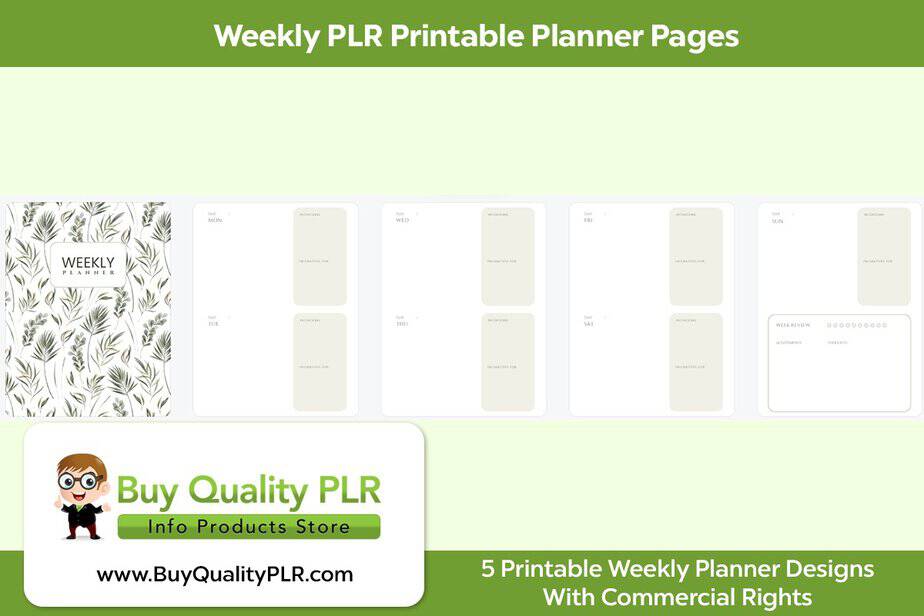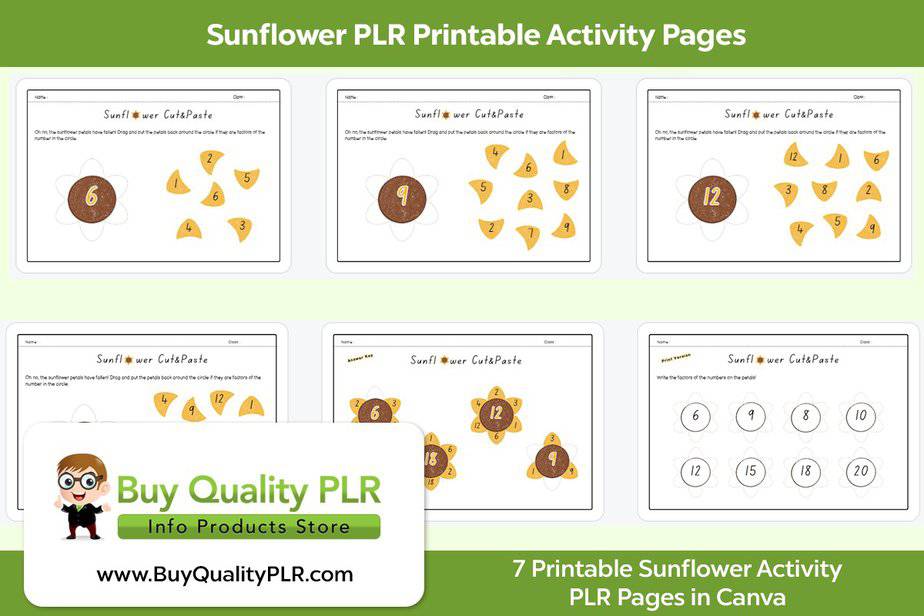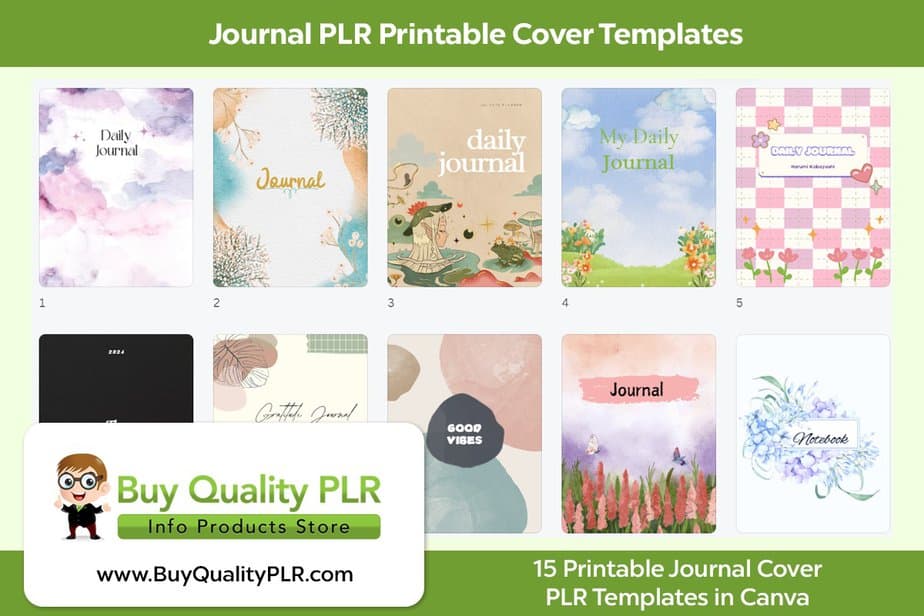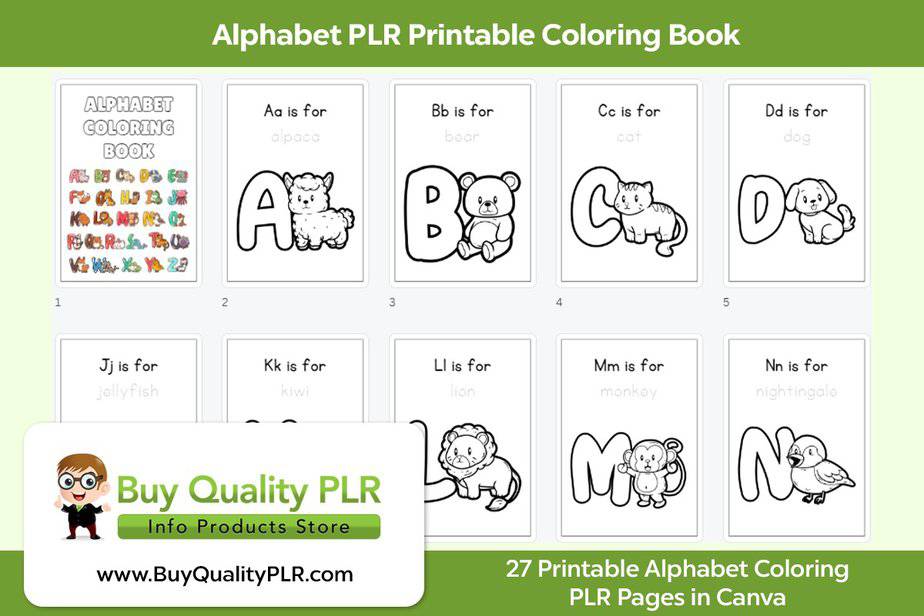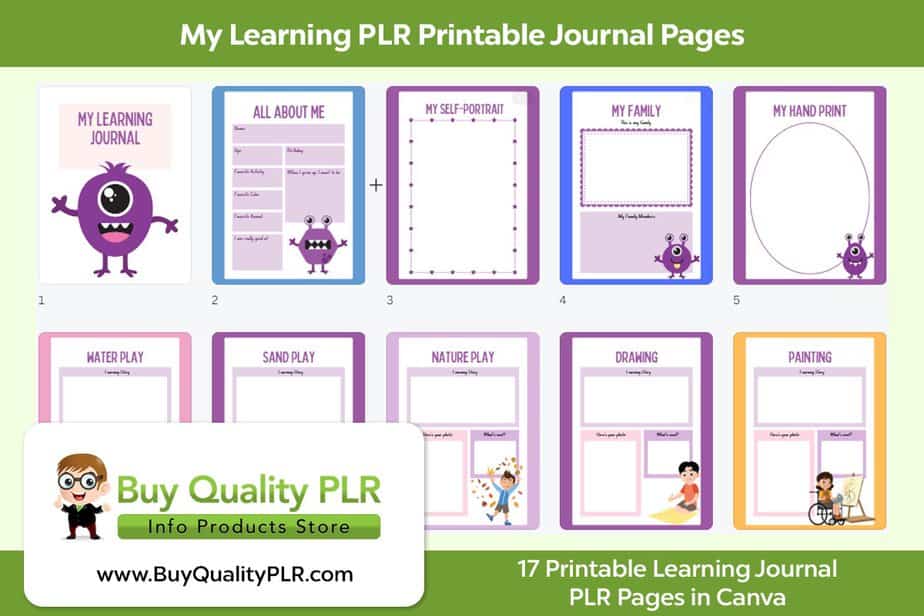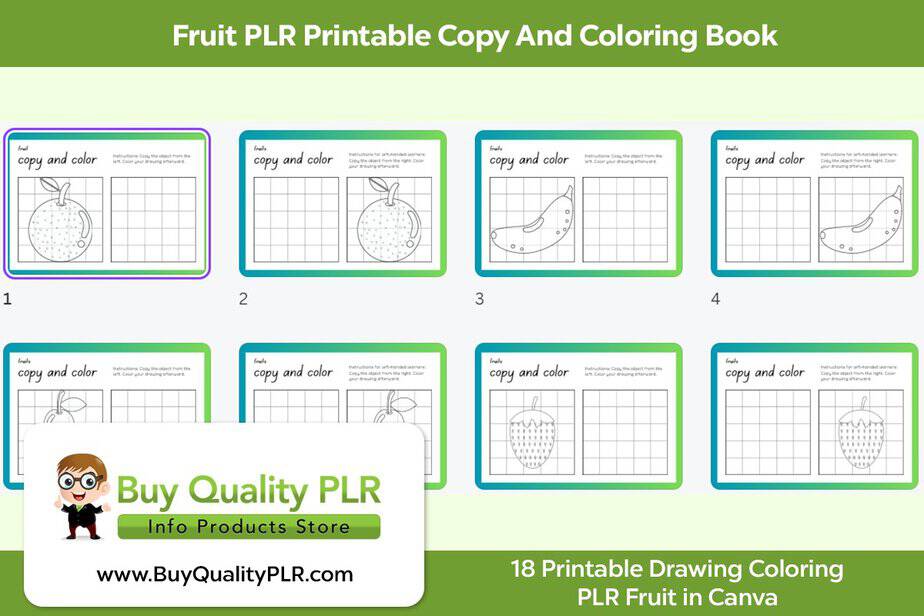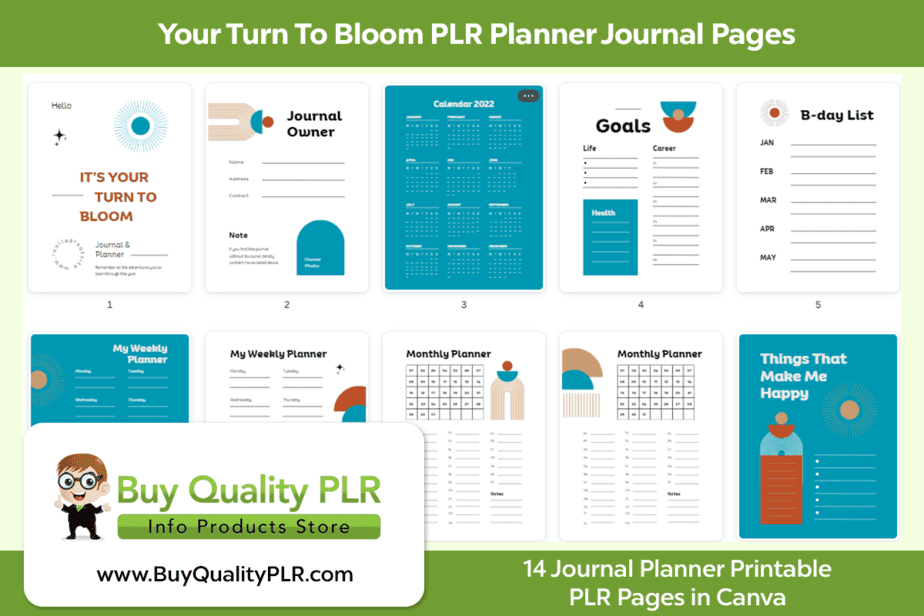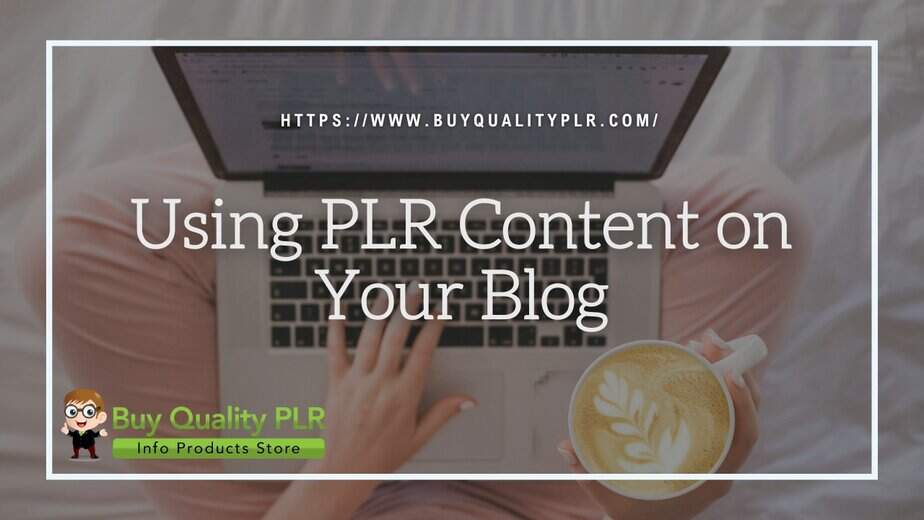
Using PLR Content on Your Blog
in Blogging, Content Marketing, Digital Products, Internet Marketing, Make PLR Unique, Online Home Business, PLR Content, PLR Marketing Tools, PLR Products, PLR Rebranding, Private Label Rights, Repurpose PLR, SEO, Using PLR#usingplrcontent #usingplr #blogging #blogplr #blog #blogcontent #whatisplr #plrcontentguide #marketingcontent #marketingstrategy #bestpractices #understandingplr #privatelabelrights #digitalcontent #marketingmateriels
Save Time: How to Use PLR Content On Your Blog
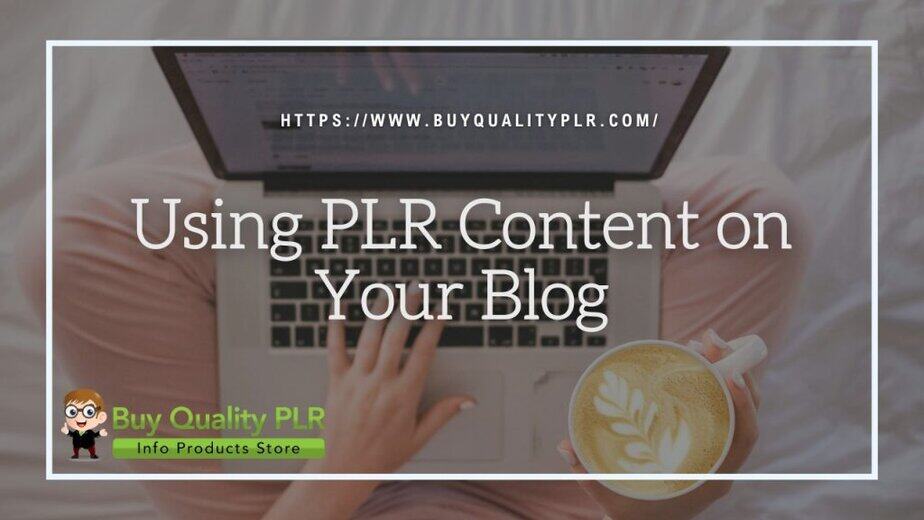
In the fast-paced digital landscape, content creation can be a daunting task for bloggers and content marketers alike. Fortunately, Private Label Rights (PLR) content offers a solution that saves time and enhances the quality of your blog posts. This article will cover PLR content, its benefits, and how to use it for your blog. Whether you’re a seasoned content creator or just starting out, understanding how to incorporate PLR articles into your content strategy can revolutionize your approach to blogging.
What is PLR Content, and How Can You Use PLR for Your Blog?
Understanding Private Label Rights
Private Label Rights, commonly referred to as PLR, is a type of content that allows you to purchase and use it as your own. This type of content can range from PLR articles to ebooks, and it comes with the flexibility to modify, brand, and even sell the content. PLR content is often pre-written and designed to be easily integrated into your existing blog content. By understanding the nuances of private label rights, you can effectively harness PLR for your blog, ultimately enhancing your content marketing efforts.
How to Find PLR Articles for Your Blog
Finding high-quality PLR (Private Label Rights) articles is crucial for maximizing the potential of using PLR in your blog. When used correctly, PLR articles can save you time on content creation while keeping your blog fresh, informative, and engaging. The key is knowing where to look and how to choose the right PLR content for your audience. Here’s how you can find the best PLR articles for your blog and use them effectively.
1. Start with Specialized PLR Websites
There are numerous online platforms dedicated to providing PLR content. These websites usually categorize their offerings, making it easy to find articles relevant to your niche. Whether you’re looking for content for a blog in digital marketing, health, finance, or any other niche, these sites have a wide selection. Some of the top PLR websites to consider include:
PLR.me: Known for offering high-quality PLR content, especially in the personal development and wellness niches.
BuyQualityPLR.com: Offers a wide range of PLR articles, ebooks, and other content types across multiple industries.
ContentSparks: Specializes in premium PLR courses and articles in business and marketing.
What to Look for on These Sites:
Content Categories: Most PLR websites have content organized into categories, such as health, marketing, personal finance, etc. This makes it easier to find articles that suit your blog’s niche.
Free vs. Paid: Some websites offer free PLR content, but paid PLR products often provide higher quality and more customization options.
2. Use Search Engines to Find PLR Articles
If you’re not sure where to begin, a simple search engine query can help you locate free and paid PLR articles for your blog. Try searching for keywords related to your niche, followed by “PLR articles.” For example:
“PLR blog content”
This search will yield a list of websites offering PLR articles, often with free downloads or paid options available. Some free PLR content might require more work to customize, so be mindful of the quality.
3. Check Out PLR Forums and Communities
Online forums and communities dedicated to PLR content are a great place to find quality articles. These platforms allow you to connect with other marketers and entrepreneurs who use PLR for their blogs and businesses. You can get recommendations for PLR providers, share experiences, and even get links to quality free PLR content.
Popular PLR Communities and Forums:
Warrior Forum: A large community of internet marketers where you can find PLR product reviews and recommendations.
PLR Facebook Groups: Many groups on Facebook are dedicated to PLR products. Members often share their best finds and discuss how they use PLR content.
4. Look for PLR Article Bundles
Many PLR websites offer bundled packages of articles that focus on a specific niche or topic, providing a lot of PLR options. These bundles are a great way to get a lot of content in one go, saving time and effort in finding individual articles. Look for bundles that include a mix of content types such as:
Blog Articles can serve as a foundation for creating unique content that resonates with your audience.: Ready-to-post articles you can use directly on your blog.
Social Media Posts: Short snippets of content designed to engage your audience on platforms like Twitter, Facebook, or Instagram.
Emails: Repurpose your PLR email series for email marketing or newsletters.
By purchasing article bundles, you can ensure that your blog remains consistent and well-rounded in terms of content.
5. Use PLR Content for Inspiration, Then Customize
When searching for PLR articles, don’t just look for content you can post as-is. Instead, consider PLR articles as a foundation or inspiration that you can personalize. Adding your own voice, unique insights, and examples will help the content resonate more with your audience and differentiate it from others using the same PLR.
How to Customize PLR Articles:
Rewrite the Introduction: Change the opening paragraph to make it more engaging and aligned with your brand.
Add Personal Insights: Insert your own experiences or examples to make the content feel more authentic.
Update Outdated Information: Ensure that the information in the PLR articles is current and relevant.
Rebrand with Your Own Voice: Adjust the tone and language of the article to reflect your personal or business style.
Best Practices for Using PLR Content
PLR (Private Label Rights) content can be a valuable asset for bloggers, marketers, and entrepreneurs looking to save time on content creation. However, to truly benefit from PLR, it’s essential to follow best practices that ensure originality, brand alignment, and high-quality content. Here’s how you can use PLR content effectively to create blog posts that stand out and drive results.
1. Edit and Customize PLR Content for Originality
Editing and customizing PLR content is vital. Your audience may perceive PLR articles or other content as generic if you use them as-is, which can result in duplicate content issues. Customizing the PLR content ensures that it reflects your unique voice and expertise.
How to Customize PLR Content:
Rewrite Sections: Change the sentence structure and rephrase key points. This ensures the content flows naturally and avoids the risk of using the exact wording that others might be using.
Add Personal Insights: Inject your own experiences, opinions, or examples into the content. This makes the PLR content feel more authentic and adds value for your audience.
Expand or Condense: Sometimes PLR content may need more detail or additional context. Add your own knowledge or research to make the content more comprehensive. Conversely, if the content is too long, feel free to shorten it to keep it concise and focused.
Modify the Tone and Style: Make sure the tone of the content matches your brand’s voice. Whether your brand is casual, professional, or authoritative, adjust the language accordingly.
2. Ensure Content Alignment with Your Brand Voice
It’s crucial that the PLR content you use aligns with your brand voice. Your brand’s voice reflects your personality, values, and how you communicate with your audience. If the PLR content doesn’t match this tone, it can confuse your readers and create a disjointed experience.
How to Align PLR Content with Your Brand:
Adjust the Language: If the PLR content is too formal or too casual, adjust the language to reflect the tone that your audience expects from you.
Incorporate Your Branding: Include phrases, slogans, or key messaging that represents your brand throughout the content. This makes it feel like a natural extension of your existing work.
Maintain Consistency: Ensure that the PLR content doesn’t stray from your brand’s core values. If necessary, make modifications to ensure the message is consistent with your mission and the audience you serve.
3. Add Value by Expanding on PLR Content
PLR content often provides a solid foundation, but to make it truly valuable to your audience, add your own insights and knowledge. This helps avoid duplication and establishes your authority in your niche.
How to Add Value:
Provide Actionable Tips: If the PLR content gives theoretical advice, add actionable steps that your readers can take immediately. This turns generic advice into practical guidance.
Include Case Studies or Examples: If applicable, share real-life examples or case studies that help demonstrate the point you’re making in the PLR article. This makes the content more relatable and credible.
Link to External Resources: Adding relevant external links to authoritative sources, research, or related articles on your blog can provide additional value and improve the content’s credibility.
4. Optimize for SEO
Even though PLR content can be helpful, it’s essential to optimize it for SEO (Search Engine Optimization) to ensure your blog posts rank well in search engines like Google. SEO optimization is key to driving organic traffic to your blog and increasing visibility.
SEO Best Practices for PLR Content:
Keyword Research: Identify the keywords that your target audience is searching for. Integrate these keywords naturally into the PLR content, including in the title, headings, meta descriptions, and throughout the body.
Use Headers and Subheadings: Break the content into readable sections with relevant headings and subheadings. Not only does this improve the user experience, but it also helps search engines better understand the content.
Internal and External Linking: Include internal links to other relevant content on your blog, as well as external links to authoritative sites. This can boost SEO and drive traffic across your content.
Image Optimization: If the PLR content includes images, ensure they are optimized for search engines. Use descriptive file names and alt text for all images.
5. Avoid Overusing PLR Content
While PLR content is convenient and cost-effective, it’s important not to rely on it exclusively for your blog. Overusing PLR content can lead to a lack of originality and diminish your credibility in the eyes of your audience.
How to Use PLR Content Wisely:
Blend PLR with Original Content: While PLR can be a great resource, make sure to complement it with your own original content. This maintains a balance and ensures your blog feels fresh and personalized.
Use PLR for Quick Content Creation: PLR works well for creating content quickly, especially for topics you may not have the time or expertise to write about. However, ensure that the majority of your content comes from your own ideas and insights.
Refresh PLR Content Regularly: If you use PLR for recurring content (like monthly blog posts), make sure to refresh it regularly. Please update the information, incorporate new insights, or reformat it to maintain its relevance.
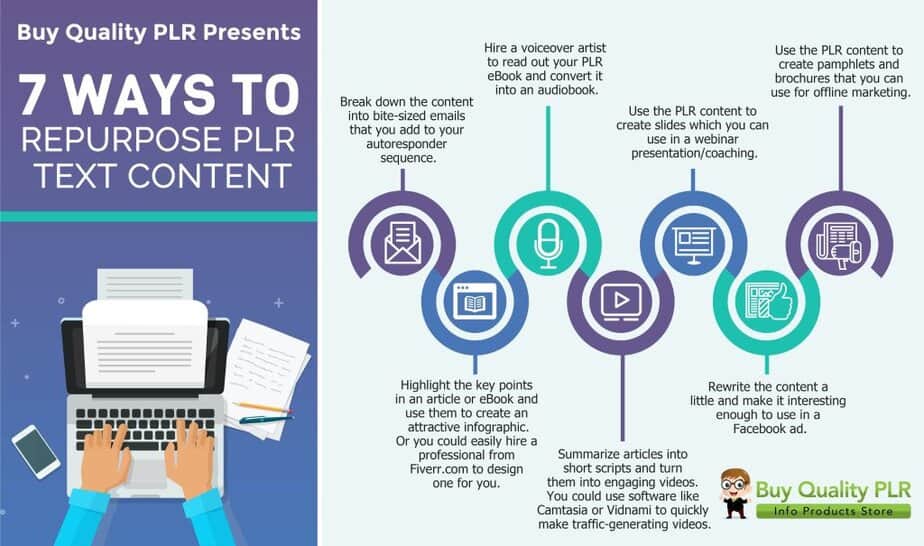
The Benefits of Using PLR Articles for Blog Content
Saving Time in Content Creation
One of the most significant benefits of using PLR content is the time it saves in content creation. Writing blog posts from scratch can be time-consuming, especially when you’re balancing multiple tasks. By utilizing PLR articles, you can quickly produce blog content without sacrificing quality. This efficiency allows you to focus on other essential areas of your business, such as marketing or audience engagement, while still maintaining a consistent flow of valuable content on your blog.
Cost-Effectiveness of PLR Content
Cost-effectiveness is another advantage of incorporating PLR content into your blogging strategy. Purchasing PLR articles is often more affordable than hiring freelance writers to create original content. This means that for a fraction of the cost, you can access a wealth of pre-written content that can be tailored to fit your blog’s needs. Moreover, by using PLR content, you can allocate your budget toward other marketing efforts, such as promoting your blog on social media or investing in SEO tools to drive traffic to your blog.
Using PLR Articles to Drive Traffic
Well-optimized PLR articles can be instrumental in driving traffic to your blog. By selecting PLR content that is relevant to your niche and optimizing it with targeted keywords, you can attract more visitors through search engines. The right PLR articles can serve as valuable content that resonates with your audience, encouraging them to share it on social media and further increasing your blog’s visibility. By effectively using PLR content, you can create a robust content strategy that enhances your blog’s traffic and overall engagement.
How to Effectively Format PLR Content for Blog Posts
Editing PLR Articles for Originality
Editing PLR articles is a vital step in transforming generic content into unique, engaging, and valuable material for your audience. PLR content offers a great starting point, but to truly make it your own and ensure it resonates with your readers, it’s essential to add your personal touch. This process not only avoids duplicate content issues but also enhances your credibility and authority in your niche. Here’s how you can effectively edit PLR articles to create original content that aligns with your brand and appeals to your audience.
1. Revise the Introduction
The introduction is the first impression your readers will have of the content. Even if the PLR article provides solid information, the introduction may need a makeover to grab attention and align with your style.
How to Edit the Introduction:
Make it Personal: Start with a relatable anecdote, question, or bold statement that draws in your readers. This creates an immediate connection and piques their interest.
Use Your Brand’s Voice: Ensure the tone of the introduction matches your brand. Whether your voice is formal, conversational, or authoritative, make sure it aligns with how you typically engage with your audience.
Introduce a Unique Angle: Instead of starting the article with the same general opening used in the PLR, think about how you can introduce the topic in a fresh way that adds value from the get-go.
2. Add Personal Insights and Anecdotes
PLR articles can be informative, but they often lack a personal touch; transforming them into unique content is essential. By adding your own insights, experiences, or anecdotes, you can enhance the article’s relatability and make it more engaging.
How to Add Personal Insights:
Share Your Experience: If the article is about a topic you’ve personally experienced or have expertise in, share your own story or lessons learned. For example, if you’re writing a PLR article about productivity, mention strategies that have worked for you.
Provide Expert Commentary: Add your perspective or a deeper analysis of the topic. Use data, research, or trends that support your unique point of view and further educate your audience.
Offer Actionable Tips: Instead of just presenting information, provide actionable steps or tips that your readers can implement. This gives the article practical value and positions you as an authority.
3. Update the Content with Relevant Data
PLR articles may contain useful information, but they can often feel outdated, especially if they cover trends, statistics, or technology. It’s important to update the content with the latest data, news, or research to keep it relevant and fresh.
How to Update the Content:
Research Current Trends: Look for the most recent statistics, studies, or trends that align with the article topic. This will not only make the content more current but also more credible.
Cite Authoritative Sources: Reference up-to-date sources such as industry reports, trusted websites, or thought leaders in your niche. This adds value and reinforces your position as an expert.
Refresh Examples: If the PLR article uses outdated examples or case studies, find new, more relevant examples to incorporate into the content. This will make the article more relatable to your audience.
4. Rework the Structure and Flow
Even if the PLR article is well-written, it may not have the best structure or flow. Restructure the content to ensure that it is easy to read and logically organized.
How to Improve Structure and Flow:
Break Up Long Paragraphs: Large blocks of text can overwhelm readers. Break up long paragraphs into smaller chunks for better readability, making your blog more accessible.
Use Subheadings and Bullet Points: Organize the content with clear subheadings and bullet points to make it easier to digest. This also improves SEO by including keyword-rich headers.
Ensure a Smooth Transition to the content you want your readers to engage with: Make sure the article flows smoothly from one section to the next. This will guide the reader through the content naturally and keep them engaged.
5. Optimize for SEO
While editing for originality is crucial, optimizing your content for SEO (Search Engine Optimization) is just as important. By editing PLR articles with SEO in mind, you increase the chances of your content ranking higher in search engines and attracting organic traffic.
How to Optimize for SEO:
Keyword Integration: Identify target keywords for your topic and integrate them naturally throughout the content, especially in the title, subheadings, and meta description.
Internal and External Links: Add links to relevant articles on your website (internal links) and to authoritative external sources. This boosts SEO and provides additional value to your readers.
Optimize Image Alt Text: Ensure that images in the PLR article or any new visuals you add are optimized with descriptive file names and alt text that includes relevant keywords.
6. Modify the Conclusion
A strong conclusion is crucial for leaving a lasting impression on your readers. Instead of ending with a generic wrap-up, modify the PLR conclusion to summarize the key takeaways and provide a call-to-action (CTA).
How to Modify the Conclusion:
Summarize Key Points: Recap the main points of the article to reinforce the value you’ve provided to your readers.
Include a Call-to-Action: Encourage your readers to take the next step—whether it’s subscribing to your newsletter, downloading a lead magnet, or making a purchase. A well-crafted CTA will help turn readers into customers.
Invite Engagement with content to your readers.: Ask questions, request feedback, or invite comments to increase engagement and interaction with your content.
Editing PLR articles for originality is crucial for creating content that resonates with your audience and aligns with your brand. By revising the PLR content to reflect your unique voice, adding personal insights, updating data, and optimizing for SEO, you can transform generic PLR products into high-quality, engaging content. This process not only avoids duplicate content issues but also helps you establish credibility and authority in your niche, ultimately enhancing your content marketing efforts. By following these editing best practices, you can turn ordinary PLR articles into exceptional resources that provide real value to your audience.

SEO Optimization of PLR Content
After editing your PLR articles to make them unique and aligned with your brand, the next crucial step is optimizing them for search engines. SEO (Search Engine Optimization) plays a key role in driving organic traffic to your blog or website, ensuring that your content reaches a wider audience. Here’s how you can optimize your PLR content effectively to boost its visibility in search results.
1. Conduct Keyword Research
Keyword research is the foundation of SEO optimization. It helps you identify the words and phrases your target audience is searching for, and it’s essential to integrate these keywords naturally into your PLR content.
How to Conduct Keyword Research:
Use SEO Tools: Leverage tools like Google Keyword Planner, Ahrefs, SEMrush, or Ubersuggest to discover high-ranking keywords related to your topic. These tools provide insights into search volume, competition, and keyword difficulty.
Long-Tail Keywords: Focus on long-tail keywords (phrases with three or more words) that are specific and less competitive. For example, instead of using “digital marketing,” try “digital marketing strategies for small businesses.”
Search Intent: Consider the intent behind the search queries. Are people looking for information, a product, or a service? Tailor your keywords to match the intent of your audience.
2. Strategically Integrate Keywords into Your Content
Once you’ve identified your target keywords, it’s important to use them strategically throughout the content. This helps search engines understand the topic and relevance of your article while improving its chances of ranking higher.
How to Integrate Keywords:
In the Title: Your title is one of the most important elements for SEO. Make sure to include your primary keyword in the title in a natural, engaging way. For example, “10 Proven Digital Marketing Strategies for Small Businesses.”
In Headings and Subheadings: Include your keywords in the headings and subheadings (H1, H2, H3). This makes it easier for both search engines and readers to scan and understand your content. For example, a subheading could be: “Understanding the Basics of Digital Marketing.”
Throughout the Content: Place your keywords naturally within the body text. Aim for a keyword density of about 1-2%, meaning your main keyword should appear every 100-150 words. Avoid keyword stuffing, as it can lead to penalties from search engines.
In the First 100 Words: Try to include your main keyword within the first 100 words of your article. This helps search engines understand what the article is about early on.
3. Optimize Your Meta Description
The meta description is a short summary of your article that appears under the title in search engine results. An optimized meta description can improve your click-through rate (CTR) and attract more visitors.
How to Optimize Meta Descriptions:
Include Keywords: Incorporate your primary keyword naturally within the meta description. This signals to search engines that your article is relevant to the search query.
Engage the Reader: Craft a compelling meta description that encourages users to click on your link. Use action words and include a brief overview of what the article offers to make your blog more engaging.
Keep it Under 160 Characters: Meta descriptions should be concise, ideally between 120-160 characters, as search engines typically cut off anything longer than that.
4. Optimize Headings for SEO
Headings (H1, H2, H3) are important not only for organizing your content but also for SEO. Properly formatted headings help search engines understand the structure of your content and give context to the keywords used.
How to Optimize Headings:
Use One H1 Tag: Reserve the H1 tag for your main title and include the primary keyword.
Use H2 and H3 Tags for Subheadings: Break your content into sections using H2 and H3 tags. Incorporate secondary keywords into these subheadings to help reinforce the topic.
Keep Headings Engaging: Make sure your headings are both SEO-friendly and reader-friendly. They should give clear insights into the content that follows.
5. Include Internal and External Links
Linking is another important SEO practice. Internal links can enhance the visibility of your content for a blog. refer to links that go to other pages on your website, while external links direct to authoritative external sources. Both types of links enhance your content’s credibility and SEO.
How to Use Links Effectively:
Internal Links: Link to other relevant blog posts, articles, or landing pages on your site. This encourages readers to explore more content and helps search engines crawl your site effectively.
External Links: Link to authoritative external sources, such as studies, research papers, or high-authority blogs, to back up the claims you make in your PLR article. This boosts the credibility of your content and improves SEO.
6. Optimize for Mobile and User Experience
Google places a strong emphasis on mobile-first indexing, meaning that the mobile version of your website is used for ranking and indexing. Ensuring your PLR content is mobile-friendly and provides a good user experience can significantly improve your search rankings.
How to Optimize for Mobile and UX:
Responsive Design: Ensure your website design is responsive, meaning it adapts to different screen sizes, including mobile and tablet.
Fast Loading Speed: Slow-loading pages can negatively impact your rankings and user experience. Use tools like Google PageSpeed Insights to test your website’s speed and make necessary optimizations.
Readable Format: Use short paragraphs, bullet points, and images to break up the text and make it easier for readers to understand and consume on any device.
7. Use Alt Text for Images
Images not only enhance the visual appeal of your content but can also contribute to SEO when properly optimized. Alt text describes the content of an image for search engines, which helps improve your image search rankings.
How to Optimize Image Alt Text:
Describe the Image: Write descriptive alt text that explains what the image is about and includes relevant keywords. For example, “digital marketing strategy chart showing website traffic growth.”
Keep It Concise: Alt text should be brief but descriptive, ideally around 125 characters.
8. Optimize for Featured Snippets
Featured snippets are the boxed information that appears at the top of some search results. Optimizing your content to appear in a featured snippet can drive more organic traffic.
How to Optimize for Featured Snippets:
Answer Common Questions: Structure your content around common questions in your niche and provide concise, direct answers. Use bullet points or numbered lists to increase the chances of your content being selected as a featured snippet.
Use Schema Markup: Adding structured data to your content can help search engines better understand it, increasing the chances of it appearing in a snippet.

Creating Engaging Blog Content from PLR
Using PLR (Private Label Rights) articles is a great way to generate blog content quickly, but simply copying and pasting the content won’t make it resonate with your audience. To truly create engaging blog content from PLR, you need to put in the effort to format, personalize, and optimize the articles to keep readers interested and encourage interaction. Here’s how you can transform PLR articles into dynamic, engaging blog posts that not only inform but also build a connection with your audience.
1. Format for Readability
One of the main reasons blog readers leave a page quickly is because the content is hard to read. To ensure that your PLR content is user-friendly, it’s essential to format it in a way that enhances readability and flow.
How to Format PLR Content for Readability:
Use Headings and Subheadings: Break up your content into digestible sections with clear headings (H2, H3). This allows readers to quickly scan the article and find the information they’re looking for. Make sure to include your main keywords in these headings for SEO.
Add Bullet Points and Numbered Lists: Lists are a great way to present information in an easy-to-read format. Use bullet points or numbered lists to highlight key points, benefits, or steps that you’re discussing.
Short Paragraphs: Avoid large blocks of text. Keep paragraphs short, with no more than 3-4 sentences, to make the content easier to read and more visually appealing.
Use White Space: A cluttered page can be overwhelming for readers. Include ample white space between paragraphs, images, and sections to give the content room to breathe.
2. Add Visual Elements
Images, infographics, and other visuals can greatly enhance your blog post by making it more appealing and engaging. Visual content helps break up text and can communicate information in a way that words alone cannot.
How to Use Visuals Effectively:
Include Relevant Images: Find or create images that are relevant to the PLR article’s topic. Whether it’s a photo, illustration, or infographic, visuals help make the content more engaging.
Infographics: If the PLR article involves data or statistics, consider turning that information into an easy-to-understand infographic. This can be a great way to visually summarize key takeaways and encourage sharing on social media.
Screenshots: If you’re discussing a tool, technique, or platform, add screenshots to guide your readers through the process. Visuals provide clarity and make your content more actionable.
3. Incorporate Personal Insights and Examples
PLR articles are typically general, but by adding your personal touch, you can make the content more relatable and valuable to your readers. Sharing your unique experiences and offering examples helps differentiate your content from others using the same PLR material.
How to Add Your Personal Touch:
Share Personal Stories: If the topic allows, share your own experiences or anecdotes related to the content. For example, if you’re writing about time management, share your own tips and methods that have worked for you.
Provide Real-Life Examples: Illustrate the concepts in the PLR article with real-life examples, case studies, or examples from your industry. This will help readers connect with the content and see its practical application.
Use Your Own Voice: PLR content often feels generic. Make sure to rewrite sections in your own voice and style to reflect your brand’s personality and build a deeper connection with your audience.
4. Incorporate Calls-to-Action (CTAs)
A call-to-action (CTA) is an essential element of engaging blog content. It guides your readers toward the next step, whether it’s subscribing to your newsletter, checking out a product, or leaving a comment. Without a CTA, your readers may not know what action to take after reading your content.
Effective Ways to Use CTAs:
Encourage Comments and Interaction: End your blog post with a question or invitation for readers to share their thoughts in the comments. For example, “What’s your favorite productivity hack? Share with us in the comments below!”
Offer a Related Product or Service: If you’re selling a product, service, or affiliate product related to the blog post, include a CTA that directs readers to that offering. For example, “Want to learn more about time management? Check out our course here.”
Link to Additional Resources: Add CTAs that guide readers to other related blog posts, guides, or resources on your site. This keeps your audience engaged and encourages them to explore more of your content.
5. Optimize for SEO
Even though you’ve edited your PLR article to make it unique, SEO optimization is crucial for ensuring that your blog post gets discovered by search engines and drives organic traffic. By optimizing your PLR content for SEO, you improve its visibility and ranking on search engine results pages.
How to Optimize PLR Articles for SEO:
Include Target Keywords: Research keywords related to your topic and incorporate them naturally into the content. Focus on using these keywords in the title, headings, meta description, and throughout the body of the article.
Optimize for Featured Snippets: Structure your content in a way that could be selected as a featured snippet on Google. Answer commonly asked questions in your content, and use bullet points, numbered lists, or tables to make the information easy to extract.
Internal and External Links: Link to other relevant blog posts on your website (internal links) and to authoritative external sources (external links). This boosts your SEO and improves the value of the content.
Image Alt Text: Make sure all images in the post are optimized for SEO by using descriptive alt text, including relevant keywords where appropriate.
6. Focus on Engagement and Readability
Creating engaging blog content goes beyond formatting and SEO—it’s about making sure your readers stay engaged and find the content valuable.
How to Keep Readers Engaged:
Start with a Hook: Capture attention from the first sentence. Use a compelling hook, such as an intriguing fact, question, or bold statement, to draw readers in immediately.
Keep the Content Concise: Avoid long-winded paragraphs and unnecessary jargon. Make sure every sentence adds value and contributes to the message.
Use Conversational Language: Speak directly to your readers in a conversational tone. This creates a more personal experience, making the content easier to digest and more enjoyable to read

Can You Sell PLR Content After Using It on Your Blog?
Understanding the Rights of PLR Content
One common question among bloggers is whether they can sell PLR content after using it on their blog. The answer largely depends on the specific rights associated with the PLR product you purchased. Many PLR products grant you the right to modify, rebrand, and sell the content, while others may have restrictions. Always review the licensing agreement carefully to understand what is permissible before proceeding to sell PLR content.
How to Package and Market PLR Products
If you decide to sell PLR content after using it on your blog, packaging and marketing it effectively are key. Create an attractive offer that highlights the value of the PLR articles and how they can help other content creators save time and effort. Use social media and email marketing strategies to promote your PLR products, showcasing testimonials and examples of how the content can be utilized. By presenting PLR products appealingly, you can generate additional income streams for your blogging business.
Legal Considerations When Selling PLR
When selling PLR content, it’s essential to be aware of the legal considerations involved. Make sure you have the right to sell the content and follow the original creator’s terms. Additionally, consider including a disclaimer or terms of service stating the rights of the purchasers. By being transparent and compliant with legal aspects, you can establish trust with your customers and build a reputable brand around your PLR offerings.
Where to Find Free PLR Content for Your Blog
Top Websites for Free PLR Articles
Discovering free PLR articles can significantly reduce the time spent on content creation for bloggers. Several websites offer free PLR content that you can use for your blog. These platforms often feature a variety of topics, making it easy to find content relevant to your niche. Some popular sources include PLR.me, BuyQualityPLR.com, and ContentSparks.com. By exploring these websites, you can access a treasure trove of free PLR articles ready to be transformed into engaging blog posts.
How to Evaluate the Quality of Free PLR
Free PLR content can be useful, but you should assess the articles’ quality before using them on your blog. Look for high-quality PLR content that is well-written, informative, and relevant to your audience. Check for grammatical errors, readability, and overall coherence. Quality matters, as using low-quality PLR can negatively impact your blog’s reputation. Always prioritize content that adds value to your blog and aligns with your brand’s mission.
Using Free PLR to Kickstart Content Creation
Free PLR content can serve as an excellent starting point for your content creation efforts. By leveraging PLR articles, you can quickly generate ideas and structure for your blog posts. Use the free PLR as a foundation, and build upon it with your unique insights and additional research. This approach allows you to maximize the benefits of using PLR while maintaining originality and engagement in your blog content. Ultimately, you can use free PLR as a powerful tool to build a rich content library without incurring significant costs.

Frequently Asked Questions
Q: What is PLR content, and how can it save you time on your blog?
A: PLR stands for Private Label Rights content, which allows you to use, modify, and repurpose pre-written content as your own, making it valuable for creating and editing your own plr ebook. This can save you time by providing a source of content that you can quickly adapt for your blog or website.
Q: Can I use PLR content for social media posts?
A: Yes, you can repurpose your PLR content into social media posts. By turning PLR articles into engaging snippets or quotes, you can create relevant social media content that drives traffic back to your blog.
Q: How do I ensure my blog remains original when using PLR content?
A: To maintain originality, you should rewrite your PLR content and integrate your unique insights or perspectives. This way, the content you present to your readers is both unique and valuable.
Q: What are the advantages of using PLR content for blog writing?
A: The advantages of using PLR content include saving you time, reducing the stress of content creation, and providing a solid base to produce high-quality content quickly. This approach enables you to concentrate more on expanding your business, rather than beginning from the beginning.
Q: How can I turn PLR articles into unique blog posts?
A: You can turn PLR articles into unique blog posts by rewriting the content, adding your thoughts, incorporating personal experiences, and including relevant examples to ensure the content is unique. This helps tailor the content to your audience while making it more engaging.
Q: Is it necessary to buy PLR content for my blog?
A: While it’s not necessary to buy PLR content, it can be a helpful way to source content for your blog. PLR content is content that you can buy to supplement your original content and maintain a steady flow of posts.
Q: Can PLR content be used in different content formats?
A: Absolutely! PLR content can be repurposed into various formats, including blog posts, ebooks, email newsletters, and even video scripts. This versatility allows you to maximize the use of the content you have.
Q: How do search engines view PLR content?
A: Search engines may not favor PLR content if it is not modified or rewritten to create original content. To improve your search engine ranking, it’s important to use the content as a starting point and add your unique spin to it.
Q: What should I consider when selecting PLR content for my blog?
A: When selecting PLR content, consider the relevance to your niche, the quality of the writing, and the potential to add your insights. Ensure that the PLR content aligns with the interests of your audience and the message you want to convey.


